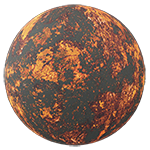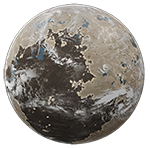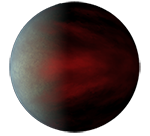
Community Tools
Studying exoplanets without being able to ever visit them requires complex models that predict what these worlds and their environments may be like. Performing these calculations requires sophisticated software that is often designed specifically for answering questions related to exoplanets. SEEC scientists both develop and utilize many software packages and tools that are made available to other exoplanet researchers and the public. Below you can learn about a handful of the software packages supported by SEEC.
Interested in submitting a tool? Learn more at our EMAC web site.
Exoplanet Modeling and Analysis Center
ROCKE-3D
Planetary Spectrum Generator
atmos




NASA Goddard's Exoplanet Modeling and Analysis Center (EMAC) serves as a catalog, repository and integration platform for modeling and analysis resources focused on the study of exoplanet characteristics and environments. EMAC's mission is to promote inter-model comparisons and cross-divisional software development. EMAC is a key project of the GSFC Sellers Exoplanet Environments Collaboration (SEEC).
ROCKE-3D is an exoplanetary climate model specially adapted to simulate worlds with a range of atmosphere compositions and stellar spectral energy fluxes, including potentially habitable rocky exoplanets and ancient Earth climates. Developed from a modern Earth meteorological model, the GISS GCM, ROCKE3-D uses dynamic atmosphere, ocean, and land surface physics to capture the complexity of a three-dimensional climate system.
The Planetary Spectrum Generator (PSG) is a radiative transfer model suite for synthesizing and interpreting planetary spectra of atmospheres and surfaces for a broad range of wavelengths (UV/Vis/IR/radio) from any observatory or any lander, including also mass-spectrometry. In 2022, PSG was selected as Goddard's nominee for NASA's Inventions and Contributions Board Software of the Year award.
atmos is a modeling package that couples photochemical and climate models. The photochemical model provides the concentrations of species as a function of altitude, including over 100 gaseous species. The climate model calculates atmospheric temperature and water vapor concentration as a function of altitude. Together, they provide a self-consistent model for the altitude-dependent chemistry and climate of planetary atmospheres.
Contact
NASA Official : Prabal Saxena
Media Contact : Claire Saravia
Web Curator : Kristen Killingsworth
